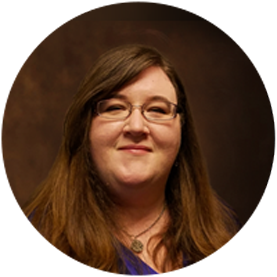Source of article Litigation Insights.
When it comes to understanding jurors, each case an attorney tries presents a whole new set of unknowns. What do these jurors think about local employers, large corporations, or pharmaceutical safety? How do jurors in, say, the Central District of California differ from those in the Northern District of California? What experiences might they have with cars or accidents that could influence their leaning in an automobile product defect case? Has media coverage affected their ability to fairly judge the case? Gaining answers to questions like these allows attorneys to develop an informed case strategy.
Given the title of this blog, it will come as no surprise that surveys can help in this regard. Because of the large sample size of jury eligibles in each survey (typically greater than 200), they are a tried-and-true method to examine jurors in specific venues, and even to develop a juror profile for optimizing voir dire and jury de-selection tactics.
There are two main surveys that clients find useful – the Community Attitude Survey and the Change of Venue Survey. While there is occasional overlap, each has somewhat different goals and methods, as we examine below:

Community Attitude Survey: Identifying How Your Jurors Might React to Your Case
Community Attitude Surveys consist of questions that explore jurors’ reactions to a set of specific topics pertinent to a case. They vary in length and consist of closed- and open-ended questions about topics like jurors’ political opinions, industry-specific attitudes, and media exposure to the case or genre of cases. They are often conducted over the phone and are administered to several hundred respondents. This type of survey obtains community members’ reactions to the parties and key issues in the case, as well as their level of familiarity with any media attention regarding the issues or the case.
Since the culture of a particular venue is difficult to gauge by outsiders, performing a qualitative survey that targets a specific community allows you to better understand the jury pool that you will encounter during jury selection. For example, in newer areas of litigation, such as talc, administering a Community Attitude Survey in up-and-coming venues would offer the chance to compare and contrast jurors’ experiences, attitudes, and reactions in these new venues versus venues that have already seen talc litigation. And if the cases haven’t really been litigated in any venues? A Community Attitude Survey in advance of the first trial would still give the trial team a better idea of what to expect from the jury pool and what arguments are more likely to work.
Consider a ground and water contamination case, in which the defendant company is important to the local economy, but has also allegedly risked the well-being of those locals. Will jurors – selected from that jurisdiction – want to punish the company? Or will they tend to protect the hands that help feed them and their families?
In a real case just like this, we surveyed over 500 jury eligibles in the venue. Our Community Attitude Survey explored residents’ knowledge of the accident and opinions of the parties to the lawsuit. It also included a case scenario summarizing the plaintiff and defense arguments, whereupon respondents were asked to record their allotment of fault for the accident and which side of the case they were leaning toward. Our results indicated that most community members held the two largest companies equally responsible for the contamination, but their views were moderated by how involved their community was in the industry (oil and gas) and by any personal knowledge of the parties. We were then able to create a statistical profile for voir dire and jury de-selection that identified jurors most likely to be strongly opposed to our client’s case.
Change of Venue Survey: Identifying Bias in Your Venue
Between heavily publicized verdicts and the non-stop barrage of plaintiff attorney advertisements, media can have a major effect on juror bias. So, to put some science behind your next change of venue motion, a survey can be conducted to assess juror bias and gather the other relevant data needed to bolster your request. Because these survey results will be used in court, they must be carried out with admissibility concerns in mind, and the methodology used must satisfy a strict and exacting standard.
For instance, a Change of Venue Survey could be administered to discover if advertisements run by opposing counsel in a particular venue have biased that jury pool, and to test if another location would be a fairer place to hold the litigation.
Other cases when Change of Venue surveys are appropriate involve high levels of media exposure, such as the Oklahoma City Bombing case, or cases involving a celebrity or politician, like when actor Wesley Snipes filed a change of venue motion when he was sued for tax fraud. Likewise, we recommend them for cases where there might be a heightened familiarity bias, such as those involving the only major employer in town.
For example, we once conducted a Change of Venue Survey in rural Mississippi for a case involving a defendant who was the only cardiologist in the area. Because most people who would be called for jury duty would be familiar with the doctor, the attorneys thought a Change of Venue motion would be in order. It was important to learn what medical experiences jurors had, their knowledge of the case, and their views on the media, to build a case for the change of venue motion that could be used in court.
Juror Attitude Survey: Issue-Based Attitudes on a National Scale
To keep our fingers on the pulse of ever-changing juror attitudes on a broader scale, we also sometimes administer a third type of survey – the Juror Attitude Survey. These help identify how jurors around the country think about various topics. At times, these surveys are client-focused (e.g., if a client expects upcoming serial litigation surrounding a product), whereby we design a national survey to get an overall estimation of jurors’ knowledge of the litigation and attitudes toward the product. This field test allows us to determine the best questions to incorporate into our background questionnaire, which we then use to develop juror profiles for de-selection.
Frequently, however, we perform such surveys for our own purposes, to study new types of litigation or changing juror concerns. Topics we’ve researched in the past include juror attitudes about the aviation industry, pharmaceutical industry, financial industry, healthcare industry, medical malpractice, Japanese corporations, food labels, and gender and age discrimination in the workplace. All this information can then provide us and our clients a deeper understanding of topics in a particular case or of certain litigation fields they commonly encounter.
Final Thoughts
Surveys are an excellent way to learn more about juror attitudes and biases before you enter trial. Generally speaking, a Community Attitude Survey is the way to go for those looking to discover how jurors in a particular venue feel about key topics and issues pertinent to your case. These results assist in the development of strategies and profiles to strengthen your jury selection efforts and your case at trial. Alternatively, if you have concerns that publicity and/or familiarity have unfairly biased your venue, a Change of Venue Survey can provide admissible science to help bolster your motion to move to a fairer location.
Considering a survey? Let’s talk through the best survey option for your goals.


By: Jill Leibold, Ph.D. – Director, Jury Research & Katrina Cook, Ph.D. – Consultant
The post Community Attitude Survey vs. Change of Venue Survey: When Should Each Be Used? appeared first on Litigation Insights.
